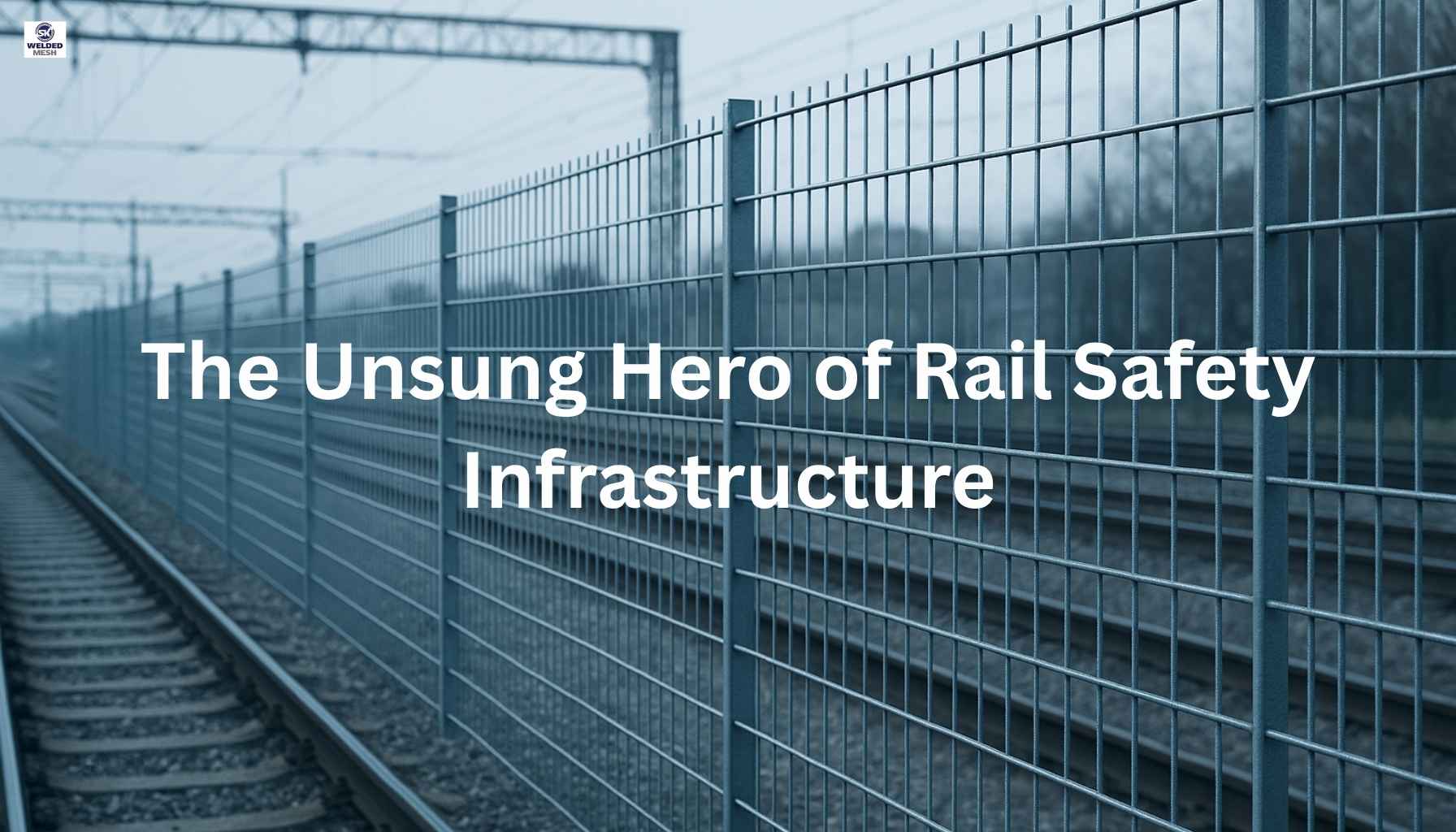

From urban corridors to rural crossings, every rail project carries hidden risks—trespassing, debris, sudden access. Most passengers never think about what keeps them safe on the other side of the platform. But those who build railways know better. Safety does not start with signals. It starts at the edge. And that’s where fencing becomes the quiet backbone of modern rail safety infrastructure.
Let’s understand how it actually works across the system.
No zone attracts risk like the tracks. Stray pedestrians, livestock crossings, construction material, all of these find their way into unguarded rail zones.
A clear barrier makes a difference.
High-strength mesh fencing secures these perimeters without blocking visibility. Unlike walls or hoardings, it allows cameras, patrol teams, and sensors to do their job. Survey teams often use mesh zones to run drone sweeps or visual spot checks.
Many railway teams now prefer anti-climb mesh with tight apertures. It prevents scaling attempts while still offering full visibility. That combination makes it easy to monitor and even easier to maintain.
Electrified tracks and substations come with their own safety demands. You’re not just keeping people out; you’re protecting them from high-voltage zones.
GI mesh fencing handles this well. Its zinc coating resists corrosion, even near overhead traction equipment or high-heat areas. It also holds its structure under wind loads, especially around open fields or elevated yards.
Teams working on elevated metros or semi-underground substations often pre-fabricate mesh panels with bolt-on mounts. This reduces on-site welding and speeds up zone isolation.
Crowd control doesn’t always mean height; it means flow. Inside and around stations, mesh finds its role in guiding, zoning, and protecting.
Lower-height mesh fencing manages queues near entry gates and ticket counters. In areas near elevators or escalators, modular mesh barriers help redirect foot traffic during maintenance or emergencies.
We’ve supported metro authorities who needed panels pre-labeled by station code and layout grid. That small step made deployment quick across multiple zones without confusion.
During track expansion or upgrade projects, temporary work zones need solid separation from live rails. Contractors use GI mesh fencing for these setups, especially when schedules move fast.
Unlike brick walls or concrete dividers, mesh panels can be stacked, shifted, and reused. Some firms also request mesh with quick-lock mechanisms or built-in reflectors for visibility during night work.
In one dual-track conversion project, reusable mesh fencing kept pace with the shifting work zones, without requiring major teardown or rebuild at each stage.
The reason mesh works so well in rail is simple: it protects without interrupting. It gives strength where it’s needed, and flexibility where the site demands it.
From curved corridors to high-traffic entryways, we’ve helped project teams plan mesh layouts that match both drawing and deadline. And that matters when delays carry daily penalties.
You don’t always notice mesh in a finished project. But that’s the point, it stays in the background while doing the heavy lifting.
In most builds, it also reduces touchpoints between teams. Once installed, it allows electrical, surveillance, and civil crews to work in parallel without needing adjustments. That coordination makes the entire site safer and more predictable.
Rail safety comes from planning, not patches. And durable, well-laid mesh fencing has become part of that planning.
Our work in this space supports contractors, public agencies, and transit design consultants who care about the same outcome, which is safer corridors that stay on schedule. We supply GI mesh built to spec, bundled by zone, and delivered with performance already built in.
If your next project involves fast rail or smarter transit, we’d be glad to help you make safety a part of the design. Get in touch with us today.